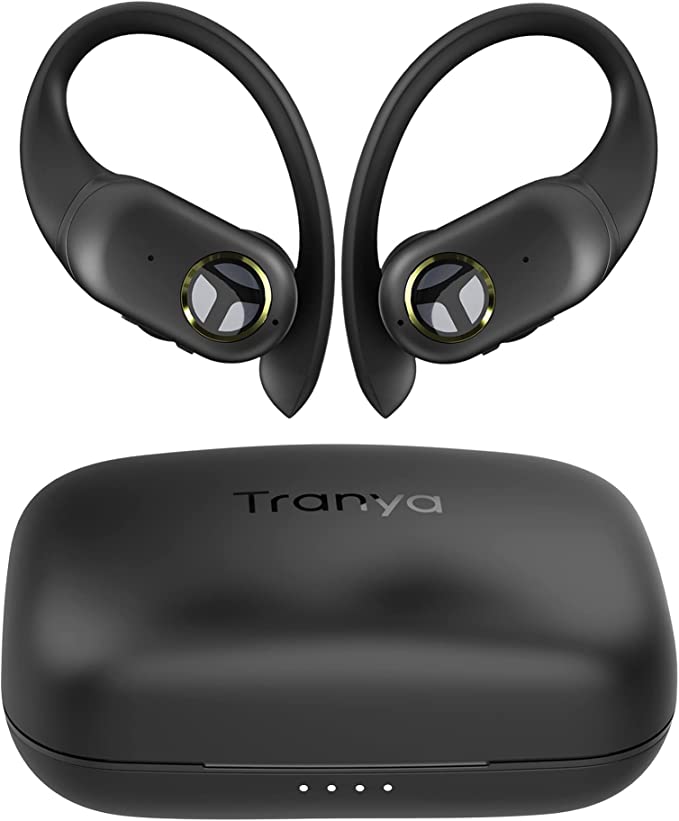Tivoli Audio Model One Digital Gen 2: Reimagine Your Home Audio with Smart Streaming
Update on Aug. 25, 2025, 9:13 a.m.
There is a certain magic to the analog dial. The faint whisper of static as you sweep past silent frequencies, the tactile resistance under your fingertips, and the sudden bloom of a voice or a song as you lock onto a broadcast. It’s a physical connection to an invisible world. Contrast that with the silent, sterile precision of a modern streaming playlist, where music appears instantly, summoned from the ether with a tap on a glass screen. For decades, these two worlds have drifted apart. One, a remnant of a shared, public past; the other, the soundtrack of a personalized, on-demand future.
The Tivoli Audio Model One Digital Generation 2 exists at the very intersection of this divide. On the surface, it is a familiar, comforting object—a simple box of wood and fabric that pays homage to the golden age of radio. Yet, beneath its minimalist exterior lies a complex digital brain, fluent in the language of Wi-Fi, casting protocols, and high-resolution streams. This device is more than just a radio; it’s a living case study in the elegant fusion of timeless acoustic physics and cutting-edge network science. By deconstructing it, we can understand not only how a modern audio device works, but why the principles of the past remain profoundly relevant in a digital age.

The Acoustic Heart: The Science of a Single Speaker
The most striking, and perhaps most controversial, design choice of the Model One Digital is its commitment to a single speaker. In an era obsessed with stereophonic width and multi-speaker surround sound, a monaural device can seem like a step backward. But this is not a limitation; it is a deliberate engineering decision rooted in the fundamental physics of sound.
The foundation of the Tivoli’s sound begins with its cabinet. The use of furniture-grade wood is not merely an aesthetic choice. Like the body of a violin or guitar, the enclosure is an active component in sound reproduction. Its material density and internal bracing are engineered to provide optimal damping, absorbing unwanted vibrations that could muddy the sound, while allowing the cabinet itself to resonate in a controlled, musically pleasing way. This contributes to the characteristic “warmth” often associated with Tivoli products.
Housed within this carefully tuned environment is a single, full-range driver. This approach eliminates the need for a crossover—an electronic filter that splits frequencies between a woofer (for bass) and a tweeter (for treble) in a typical two-way speaker. While crossovers are necessary for extending frequency range, they can introduce their own problems, including phase shifts and timing errors where the frequencies meet. By using one driver to reproduce the entire audible spectrum, the Model One Digital ensures a coherent, point-source sound. All frequencies emanate from a single point in space, resulting in exceptional clarity, particularly for the human voice.
This design masterfully sidesteps the “sweet spot” problem inherent in stereo systems. To perceive a proper stereo image, a listener must be positioned equitably between two speakers. The Model One Digital’s mono output fills a room with a consistent, uniform sound field that is enjoyable from any position. This makes it ideal for its intended environments—kitchens, offices, and bedrooms—where critical, focused listening is secondary to creating a rich, immersive atmosphere. The surprisingly robust bass, meanwhile, comes from a less visible feature: a small, tuned port on the back. This is a bass-reflex design, which utilizes the principle of a Helmholtz resonator. As the speaker driver moves backward, it pressurizes the air inside the cabinet; this air is then forced out of the port, creating a second sound wave that reinforces the low frequencies. It’s a clever piece of physics that allows a small box to produce a sound far larger than its size would suggest.

The Electronic Core: From Analog Power to Digital Precision
If the speaker and cabinet are the device’s soul, its electronic core is the sophisticated heart that pumps life into it. The signal chain begins with the amplifier, the component responsible for taking a weak audio signal and boosting it with enough power to move the speaker driver. The Model One Digital employs a Class AB amplifier, a classic choice in the hi-fi world. It represents a carefully struck balance: it offers much of the pristine, low-distortion sound quality of a pure Class A amplifier, but without its tremendous inefficiency and heat generation. It’s a more complex and costly design than the hyper-efficient Class D amplifiers found in many modern smart speakers, signaling a commitment to traditional audio fidelity.
Before the analog amplifier can do its work, however, a digital signal must first be converted into an analog waveform. This crucial task falls to the Digital-to-Analog Converter, or DAC. When you stream a song, the data arrives as a series of numbers—discrete snapshots (samples) of the original sound wave. The DAC’s job is to “connect the dots,” translating this binary code back into a smooth, continuous electrical voltage that mirrors the original sound. The quality of this translation is paramount to good digital audio, and a well-implemented DAC ensures that the nuance and detail of the recording are not lost.
Yet, there is another, invisible hand at play: Digital Signal Processing (DSP). A powerful microchip inside the radio manipulates the digital audio stream in real time. DSP is the secret sculptor of modern audio, capable of shaping the sound in ways that would be impossible with physical components alone. It applies equalization (EQ) to fine-tune the frequency response, ensuring the sound is balanced. It can also employ dynamic range compression to prevent the speaker from distorting at high volumes and, most impressively, use psychoacoustic algorithms. These clever tricks can enhance harmonics to create the perception of deeper bass than the small driver can physically produce. This explains the “bass-heavy” character noted by some users; it is not an accident, but a deliberate tuning choice made possible by the precision of DSP.

The Digital Nervous System: A Tale of Two Wireless Worlds
The true modernity of the Model One Digital is revealed in its connectivity. It is fluent in the two primary languages of wireless audio, each suited for a different purpose. Think of Wi-Fi and Bluetooth as two different types of roadways for your music.
Bluetooth 5 is the convenient local pathway. It creates a direct, short-range link between your phone and the radio. It’s incredibly simple to use, perfect for a guest who wants to quickly share a song without joining your home network. The Bluetooth 5 standard offers significant improvements in range and stability over previous versions, but its bandwidth is inherently limited. To fit the music through this relatively narrow pipe, audio data must be compressed using codecs like SBC or AAC, which can sometimes result in a loss of fidelity.
Wi-Fi, on the other hand, is the multi-lane superhighway. Using your home network, it has vastly more bandwidth, capable of carrying high-resolution, lossless audio without compromise. This is where Apple AirPlay 2 and Google Chromecast come in. These are not streaming services, but rather sophisticated “casting” protocols. When you select the Tivoli as an output from Spotify or Apple Music, your phone doesn’t send the audio itself. Instead, it acts as a smart remote control, sending a command to the radio with a link to the music stream on the internet. The radio then uses its own Wi-Fi connection to pull the data directly from the source. This is more efficient, frees up your phone, and results in superior sound quality.
This reliance on the home network, however, is also the source of the most common user frustrations. The radio’s ability to be “seen” by your phone depends on a perfectly functioning network and complex discovery protocols like mDNS (also known as Bonjour). Any issue with your router—a firewall setting, an outdated firmware, or network congestion—can render the connection unstable. In the age of smart audio, the home Wi-Fi network has become the new antenna, and its reception can be just as fickle as the old FM broadcasts.

A Legacy in Hand: Design and Interaction
All this technology is wrapped in a design that speaks to a rich heritage. The aesthetic lineage traces back to the original Model One radio, a product that cemented the reputation of its creator, the legendary audio engineer Henry Kloss. A towering figure in the hi-fi industry, Kloss co-founded companies like Acoustic Research (AR) and KLH, and his work consistently embodied the Mid-Century Modern philosophy of “form follows function.”
The Model One Digital continues this tradition. Its clean lines, natural materials, and absence of superfluous decoration are a testament to a belief that good design should be honest and intuitive. This is most evident in its primary control: a single, satisfyingly tactile ring-and-dial combination. In an age of inscrutable touch controls and mandatory companion apps, this physical interface is a bold statement. It controls volume, source selection, and tuning with elegant simplicity. The crisp OLED screen provides clear, necessary feedback without becoming a distracting focal point. It’s a user experience that respects the past while serving the present.
Ultimately, the Tivoli Audio Model One Digital Generation 2 is a device that facilitates a conversation. It’s a dialogue between the analog principles of acoustics championed by pioneers like Henry Kloss and the digital realities of our networked world. It proves that new technology doesn’t have to erase what came before; it can, in fact, enrich it. The goal of high-fidelity audio has always been to faithfully reproduce a signal and transform it into sound that moves us. The Model One Digital reminds us that this goal remains the same, whether that signal arrives on the invisible crest of an FM wave or as a stream of data packets from a server half a world away.



























































